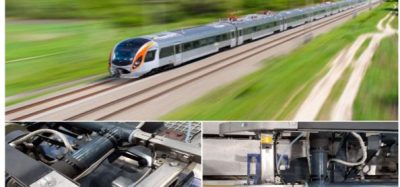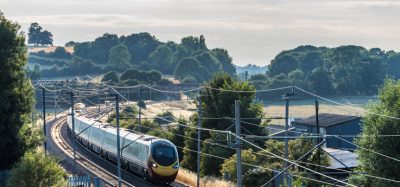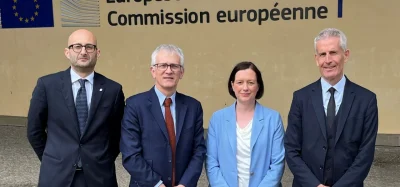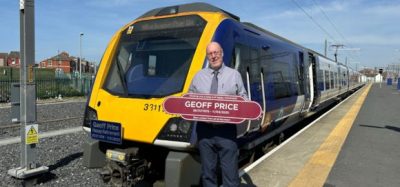Govia Thameslink Railway’s mission to make the train a viable option for all
Posted: 4 July 2024 | Carl Martin - Govia Thameslink Railway | No comments yet
Carl Martin, Accessibility Lead at Govia Thameslink Railway (GTR), spoke to Global Railway Review’s Halimah Haque about how far accessibility in rail has come, detailing how listening to customer feedback and the support of the Access Advisory Panel are advancing initiatives that make a true difference.
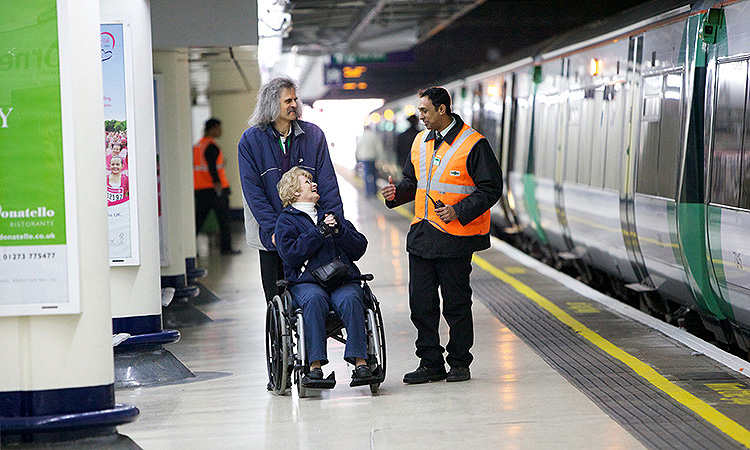

Credit: Govia Thameslink Railway
Can you outline Govia Thameslink Railway’s approach to passenger accessibility and highlight any key initiatives aimed at ensuring an inclusive travel experience?
At Govia Thameslink Railway, we want to empower everybody to travel independently and with confidence”
At Govia Thameslink Railway (GTR), we want to empower everybody to travel independently and with confidence. That’s why we’re always on the lookout for new initiatives.
Our approach is around collaboration – that’s at industry level and that’s also making sure that we listen to our customer’s voice and that we work with charities and community groups. We also have what is known as an Access Advisory Panel, that’s a group of disabled customers that sit on our panel. We gather bimonthly for meetings, but they also support us in many other ways.
When we want to get their endorsement or their input, we’ll send emails out to gain their opinions and then discuss it together further down the line. They also support us with initiatives and we meet up at various locations and do things with them because it’s imperative that we get the voice of the customer, those that are disabled, that really have that lived experience, to provide their insight. It’s the only way as an industry we can move forward.
How does the Aira app align with the company’s commitment to improving accessibility, and could you share any other strategies or initiatives that GTR is currently implementing to enhance accessibility beyond technology like the app?
One part of our overarching strategy is our accessibility improvement plan. This sits within the accessibility team and it looks to improve a myriad of different things for our customers. In formulating this improvement plan, it’s essential that we seek feedback from people who have experience of living with disability.
Our Access Advisory Panel members include people who are blind and partially sighted. We wanted to get their input into some of the innovation that was out there to further assist this group of customers. That led us, through their recommendations, to the third-party app named Aira.
The Aira app enables blind and partially sighted customers to place a video call with a trained advisor who looks through the customer’s smartphone camera to… guide them”
The Aira app enables blind and partially sighted customers to place a video call with a trained advisor who looks through the customer’s smartphone camera to give them a visual interpretation of their environment and guide them around the station on speakerphone.
We’ve now made the app free to use at 12 of our stations and we’re trialling it with the support of national sight loss charity Thomas Pocklington Trust and volunteer members of the Sight Loss Councils that they fund.
It was one of the members of our Access Advisory Panel, a gentleman called David Smith, who is a customer of ours, that first suggested Aira. He is blind and he works for Thomas Pocklington Trust.
When David leaves the station, Aira helps him make the transition from the train to the next part of his journey. Imagine you’re David: you get off a train, but you want to find your way to the bus stop. Or you want to go to the taxi rank. You might just want to pop to the loo, but where is that? Of course, we have staff all over our stations, but perhaps they didn’t happen to be nearby when you arrived.
To make the app work for free, we have set up a geo-ringfence around the stations that we’re trialling. The app knows you’re at one of our 12 stations and it tells you that the app can be used for free (at our expense). And the best bit is it can be used a little bit outside the station as well, so it helps with that transition to places nearby, such as taxi ranks and bus stops.
Furthermore, this is an app that a lot of people already use in their everyday life. We didn’t need to reinvent the wheel. For example, if a blind person drops something on the floor at home, the app gives them the ability to quickly make a call and find it again. People are using it and they like it. We just want more people to know about it and make use of it.


Credit: Govia Thameslink Railway
Customer feedback
Fundamentally, most of our improvements come from customer feedback. We receive feedback where things haven’t gone to plan as that’s where we learn and it gives us the ability to reflect on how can we improve.
We have an assisted travel webpage which has a whole host of information around assistance when travelling, accessible information for our accessible travel policy, and so on. Some of the feedback we received from customers, showed there was a bit of ambiguity around the travel experience. So, we created ‘what to expect when travelling’ videos that are now on this webpage. These videos cover planning the journey, arriving at a station, getting on-board a train and arriving at your destination – covering the whole journey experience. It’s just another way of making some of our literature more accessible. Perhaps a traveller has sight but is dyslexic. For them, watching a video is not only easier, but much more memorable for them.
One of the other initiatives which I’m actually really excited about, is sanitary bins. We have just finished installing sanitary bins in all the male toilets at our stations and also at our staff offices and depots. These are for men who need to dispose of incontinence products, which is a bit of a taboo subject. We are doing this in partnership with Prostate Cancer UK, for their Boys need Bins campaign.
Again, we know of this need because we have a panel member that has a non-visible disability. Hearing this kind of information from real people really opens your eyes to the non-visible disabilities when travelling. Implementing these sanitary bins, I see as a huge benefit that will hopefully give more of our male customers greater confidence to travel.
Mobile assistance teams
In addition, in 2023, we completed the roll-out of our mobile assistance teams. These teams work at 51 stations across our network. These stations are either unstaffed or staffed for only certain times of the day, meaning that outside these times, those customers reliant on assistance couldn’t travel to or from that station. Instead, we relied on our policy to get people to their destination by providing alternative transport.
Mobile assistance team members aim to reach each of those 51 stations within 20 minutes of being called. So, if someone were to turn up at the railway station, they can contact a member of the mobile assistance team using a station help point or a freephone telephone number. Customers can even do this before they’ve left the house and say I’m going to be there in 20 minutes and be met. Primarily, it’s about helping people board the train, but it could be for all sorts of things.
We’ve seen the number of requests for assistance at those 51 stations more than double in the 12 months since we’ve introduced this scheme. So, launching the mobile assistance teams has enabled more people to travel to and from those locations at times when they are not staffed. It’s all about giving our customers greater choice and freedom.
You’ve already mentioned the importance of collaboration, but how does Govia Thameslink Railway collaborate with stakeholders to influence decision making to enhance the overall passenger experience?
We’ve discussed how we seek our feedback from our customers, community groups and charities. But we also meet periodically as an industry to share best practice. We’re part of the Go-Ahead Group, and they’re very much around.
Obviously, Go-Ahead is known for providing bus services, but I do meet with them bimonthly as well, because, again, it’s around sharing best practices on a multimodal approach. There is insight that we can collaboratively share across the two different public transport sectors.


Credit: Goiva Thameslink Railway
What other technologies does Govia Thameslink Railway leverage to improve accessibility for passengers with diverse needs?
Our assistance numbers have been growing at quite a phenomenal rate and we’re now assisting far more people than we were before the pandemic – almost double the numbers of 2019″
The GTR strategy entails aligning expectations both of what our staff need and also what our customers expect.
One of the things that’s available for our staff is called the RST Toilet Checker. It’s an app purely for staff and it gives them the ability to be able to see the trains and what toilets they have on-board, whether they’re in service or out of service. It gives our station staff the ability to check, for instance, that toilets are working on the train next arriving, which means our customers can better plan their journey if that’s a real requirement for them.
We also have the Passenger Assist app that customers can download onto their phones and use to pre-book their assistance. The app also includes information when they search their origin station and destination station. There are links there that provide information from the National Rail Enquiries station information pages. This is really useful for people planning journeys. It helps them understand whether that’s a step-free station, whether there are accessible toilets, the staffing hours, whether it has accessible parking and so forth. These are all things that better support our customers in making the right decision for them.
The staff now have access to the Passenger Assist app through their phone as well. It gives them better visibility of anyone that’s booked. We are really proud that the majority of our customers choose to turn up and go at a station and that’s something we would always want to emphasise. You don’t need to book, you can just turn up.
Our staff are also able to input people onto the app, who have turned up to travel without pre-booking assistance. This enables us to keep a record of how much assistance we’re providing as a train operating company, not just pre-booked, but also the amount of turn up and go assistance we’re providing. This helps us plan the resources we need for the amount of assistance we’re providing.
Talking about the amount of assistance we’re providing at our stations, our assistance numbers have been growing at quite a phenomenal rate and we’re now assisting far more people than we were before the pandemic – almost double the numbers of 2019. We’re making our services more accessible, and I’d like to think this is what’s contributing towards the growth we’re seeing.
You’ve highlighted the tools that are given to employees to better assist customers. But could you give us a bit more insight about the training and support that Govia Thameslink Railway staff are provided with to promote inclusivity and help them assist passengers with disabilities?
All our staff have complete accessibility awareness training. This training is mainly focused on assistance, communication and creating a barrier-free railway and understanding things like the Equalities Act, reasonable adjustments and the models of disability, i.e. the medical model, the social model. This training ensures our staff have a better understanding of the customers they’re assisting.
Other training modules include aspects of the law, providing wheelchair assistance and guiding a blind person. These are some of the key areas that we want to cover in our disability awareness training, to help meet our Accessible Travel Policy. Training is given to all staff, and we give them a ‘refresher’ every two years. In addition, our staff are always able to make use of our online libraries to learn more and gain further information around providing assistance.
Our key challenge
We believe everyone should have access to the railway and we want more people to have the confidence to do this. We have lots of things in place on the railway to provide support and encourage people to do just that. One of our key challenges I suppose is actually getting that message out.
The main point of our social model is that I’m disabled, but I’m not disabled by my condition; I’m disabled by the environment around me”
I’ve been with Govia Thameslink Railway for three years now. Coming in as a disabled person myself and a wheelchair user, I was able to see how far the industry has come over the past 20 to 30 years. It’s easy to forget, because as a disabled person, you often see the barriers, and actually sometimes it’s about stepping back and seeing how much we’ve improved, and appreciating the fact that this improvement will continue. Access to transport is access to life, as it clearly enables everyone to be able to participate. Disabled people work, they socialise, they do all the things that everybody else does. That’s why it’s so important that we make sure that we can get everyone to where they want to be.
We want to do it better. We want to get better at what we’re doing and a lot of that is about engaging our colleagues.
I mentioned earlier the models of disability in our staff training, namely the social model and the medical model. There are ways of looking at disability. The main point of our social model is that I’m disabled, but I’m not disabled by my condition; I’m disabled by the environment around me. It’s the fact that this station has steps and doesn’t have lifts. It’s the fact that the windows are at the wrong height for a wheelchair user.
We seek to overcome those barriers to people’s travel. And yes, you’ve got the big-ticket items like lifts which cost millions of pounds and can only be funded by central government – and there’s a programme to do that. But there are many other things we can do, and it’s often about having a member of staff in the right place at the right time.


Credit: Govia Thameslink Railway
We talked a lot about technology, but my team run ‘Try a Train’ events and this is where we take a group of people from, say schools onto our network. Only two weeks ago, for example, we had two schools, one from Peterborough and one from Cambridge. They were teenagers who have special educational needs and disabilities. The aim is to take people to a station to show them where you can buy a ticket, how to find the train information, how to board a train, go to another station, get off, see how it all works. Also, what information there is on the train, and other things like that.
This can make such a difference to people. The feedback we receive tells us its value, which is further underlined by the fact that people want to keep doing it. We have quite a few schools and colleges across our network and the teachers keep asking to put another contingent of students through the programme, so it’s clearly making a difference.
We have to keep listening to people, to what they’re saying helps and makes a difference for them.
If Govia Thameslink Railway were considering implementing a new accessibility initiative, what criteria or considerations would you prioritise when evaluating its feasibility and potential impact on improving passenger accessibility?
At the end of the day, this is very much led by, and received directly from, our customers and discussions with our Access Advisory Panel and other groups. Clearly, we have to be honest and open about the fact that there’s a finite budget to everything that we do. So, any initiative has to be cost effective as a solution.
Every year as an industry, we are becoming more and more accessible… It makes such a difference, and it could make that difference for so many potential customers”
Personally speaking, I think it’s very important because anything that’s successful potentially has to be something that can be implemented as an industry for greater consistency. For me, I always have to consider if it is something that would benefit everyone, across the country. If it’s too expensive to roll out nationally then it just doesn’t work.
That is why we’re trialling the Aira app and why we’ve had so much support from Thomas Pocklington Trust. We’re always trying to get more feedback, because if the app isn’t doing what people need, we shouldn’t be working with or using it.
When we’re looking at solutions being cost effective, with the Aira app, if it’s not being used, it doesn’t cost anything. But when it’s used, that’s when you pay for it. There are lots of other innovations out there where you’re paying huge OpEx costs, ongoing costs and actually you might only have say five users, but it could be costing you hundreds of thousands of pounds a year. It’s got to be cost effective.
For the Aira app, it was like the airtime. We bought a whole bunch of minutes for the use of this. When anybody who’s blind or partially sighted who has the app on their phone approaches the railway station, it comes up with a message saying they’ve got free use of this for 30 minutes, which is ample time, as we’re told. The average customer uses about five minutes from the data that we’ve had back.
It’s really important to note that this is not to take the place of staff at all. It’s just that we can’t guarantee that a member of staff’s going to be at that particular station entrance as you arrive. So, it just provides that link.
The feedback we had when we were looking into this, showed that one of the biggest barriers for blind people was arriving at a station and finding a member of staff. That’s where Aira creates that link, because it takes you from the outside the station onto the concourse or towards the gate line to find that member of staff. Then our staff will take over and provide a guiding arm, if you need it, to get you on-board the train to your destination.
Every year as an industry, we are becoming more and more accessible and it’s great for me because it means I can now visit more stations than I could a year ago. It makes such a difference, and it could make that difference for so many potential customers. That’s why it’s so important for us to get the message out there.
You always hear a horror story, but you don’t often hear the positive stories. So, by showing the resources, the information available, it may just give someone the confidence to try their first train experience, to hopefully find it positive and realise that the train is a viable option for them.





